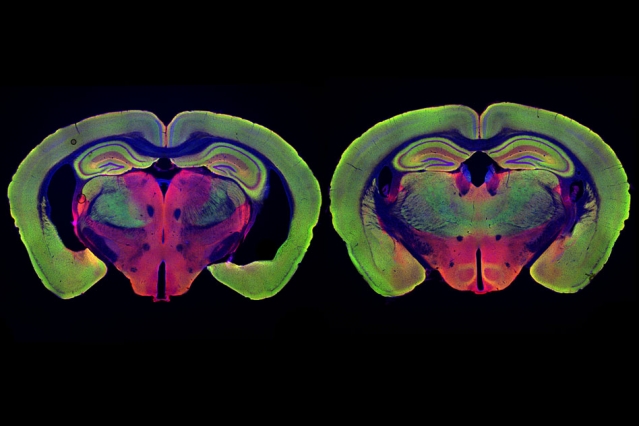More than a century after its discovery, Alzheimer’s disease still has no definitive cure, and hundreds of drugs and chemical trials have hit dead ends. Searching for answers, some researchers are pursuing completely out-of-the-box solutions. One, which Being Patient has covered over the past three years, doesn’t involve drugs at all: Instead, it relies on “light therapy.”
Li-Huei Tsai, a neuroscientist at the Massachusetts Institute of Technology, is researching the use of visual and auditory stimulus to stimulate electrical activity in the brain, potentially cleaning out toxins before they can build up. In 2019, she concluded at the end of a two-year gamma light therapy study that a combination of flashing lights and clicking sounds, which flicker and click at a certain frequency to mimic the brain’s natural rhythm, appeared to reduce neurodegeneration in Alzheimer’s-positive mice by way of reducing inflammation and cell death in the brain.
These gamma waves stimulate microglia cells, which act as cleaners in the brain. “They are like an immune surveillance,” Tsai recently told David Robson in a recent feature for the BBC. “They survey the environment and they can clear away pathogens, toxic waste and foreign substances, and get rid of them.”
“Previous studies have found that microglia often fail to carry out these duties in Alzheimer’s patients,” Robson writes. “But the gamma waves seemed to reawaken them – leading to reduced levels of the amyloid plaques and tau protein tangles. What’s more, the effect appeared to be very rapid. Just an hour’s worth of stimulation was enough to activate the microglia and bring about a notable reduction in the amyloid plaques.”
Past research supports Tsai’s findings: In a study published in 2016, researcher Amy Clements-Cortes at the University of Toronto placed participants diagnosed with Alzheimer’s into chairs with built in speakers that released low-pitched sounds within the gamma frequency band. After six 30-minute sessions, Clements-Cortes noted significant improvement in cognitive abilities.
And in 2017, a University of California study looked at a different kind of light therapy — photomodulation — and found that participants’ neurological conditions improved in 12 weeks of treatment.
In discussing the future of this technology for humans, Tsai told Being Patient in a 2017 interview, “I think human experiment has to be conclusive. That has to be done very, very carefully with all the right controls and enough subjects. Most likely, I think, this will be done with maybe some sort of device, maybe goggles, something that can faithfully treat people with the correct frequencies.
“What I’m worried about, since our publication, is a lot of people wrote to me and just said they are making a home device,” she said. “I’m very worried about that because the wrong frequencies may be detrimental. There are two important things that one has to figure out first before we go ahead with a human trial. One is to find out if 40 hertz light stimulation in human brains can train the neurons to fire gamma frequencies. We show it in mice.”
While more testing is required to properly understand the potential benefit or harm of gamma wave stimulation in the brain, Tsai believes her research holds potential as a preventative measure for people after middle-age to preserve brain function before cognitive decline begins to show.
Learn more about the details of the current research in Robson’s recent BBC story here, and read the full 2017 interview with Being Patient here.




I’ve recently been diagnosed with alzheimers and have been the victim of migraines since childhood. One thing that caused problems was flashing light and was told to avoid them. My question is would this treatment cause the same problem.
Years ago my daughter had an eye mask that had a set of light patterns to help her migraine. It was very successful. Maybe this will either work or slow Alzheimer’s down. Hope it does.